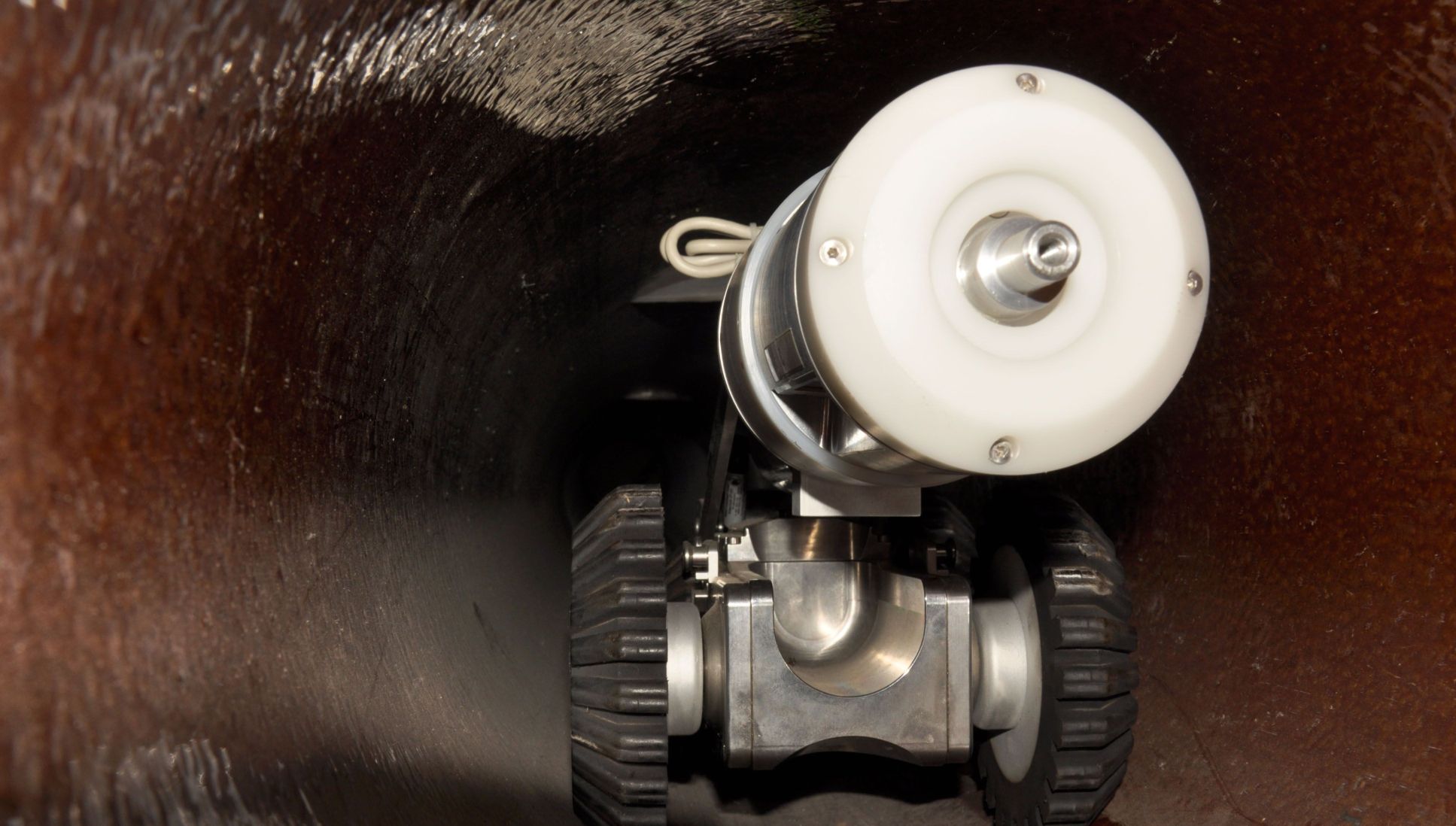Brief description of the project
The sewage system in our cities is an essential part of the urban infrastructure. In Germany, the first sewers were already built in the 19th century. Thus, a part of this sewer network is more than one hundred years old. The total length of the sewer network in Germany is about 550,000 km, and the replacement value of the sewer networks is estimated at about 690 billion euros. Sewer networks are thus the most important fixed assets of municipalities and cities in Germany.
Status quo: high inspection effort
In order to be able to plan efficient rehabilitation measures sensibly, reliable data on the condition of the individual sewer sections must be collected. So far, this is done with a camera vehicle that takes pictures of individual sewer sections, which then have to be evaluated manually by experts. Frequently, errors occur during the evaluation and classification of the damage in the sewer, so that the video recordings must be evaluated several times in order to obtain a reliable picture of the damage. Due to the extensive sewer networks, a high expenditure of resources is necessary.
Project goals
Inspection of sewer networks through virtual inspection
The goal of the AUZUKA project is therefore to create work equipment for sewer network operators to record sewer damage as automatically as possible. In order to guarantee an economically usable system, the technologies must clearly exceed the state of the art. It is aimed that less than 10 % of the relevant damage cases have to be assigned manually. The specifications for this are provided by Berliner Wasserbetriebe as project partner.
The chosen solution approach provides for four stages:
- Identification of undamaged posture sections
- Identification of sections with negligible damage
- Identification and recording (damage pattern, extent, location) of relevant damage
- Automated damage classification
Project result
In-Pipe-Navigation
Within the subproject "Odometry by means of sensor fusion" Fraunhofer IOSB develops methods for in-pipe navigation to map the channel attitude. In order to enable the most precise localization of the damage in the sewer, it is necessary to determine the position of the mobile robot within the sewer very precisely. This enables a correct local registration of the recorded camera images and the derived damage images. This is especially important with regard to possible rehabilitation measures (e.g. the milling of house connections after an inliner rehabilitation), where a highly accurate localization is necessary.
For this purpose, Fraunhofer IOSB is developing a sensor module, which enables the position of the robot to be determined as accurately as possible. The sensor module contains among other things an inertial measuring unit (IMU) and an optical sensor.
Within the AUZUKA research project, Fraunhofer IOSB is developing sensor fusion algorithms which allow to measure the progress within the channel accurately. The intended sensor concept clearly exceeds previous approaches, which are usually limited to the use of cable length and wheel odometry for position determination.
 Fraunhofer Institute of Optronics, System Technologies and Image Exploitation IOSB
Fraunhofer Institute of Optronics, System Technologies and Image Exploitation IOSB 